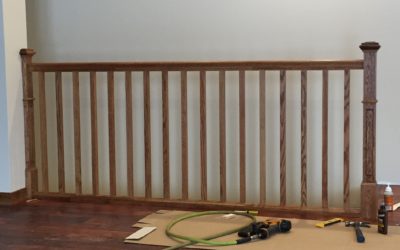
It’s that time of year again. We can finally begin to put away the hat and
This guide will give you tips on how to prepare your home for the upcoming season, and save you money in future repairs.
Prepare Your Home For Spring: 10 Tips
Clean the Gutters
This seems to be a vital yet often neglected task in home maintenance. If gutters get too full of leaves and debris, water could get backed up and create mold , or even end up in your house. After you get the gutters clean, it’s a good idea to run a hose down the roof to check for proper drainage. If you notice any leaks, dry the area and caulk any holes.
Inspect the Roof
Look for broken or buckling shingles, cracked or worn rubber around the vent pipes, and check the flashing around all side walls and surface areas. If your roof is relatively new, these can be easy fixes as long as they get taken care of, so it’s important not to neglect. If your roof is nearing the end of its life (usually 20-30 years depending on location), keep an eye out for moss and lichen, which could signal decay from beneath the surface.
Check the AC Unit
Spring is a good time to inspect the air conditioning unit and make sure it’s ready for summer. There’s nothing worse than getting to the first 80 degree day of the year and realizing you have no AC. You’ll want to make sure the power is working, and the air filter is cleaned or changed.
Change the Furnace Filter
This is another simple home efficiency task that is essential and often gets neglected in the winter. The exact frequency at which you should change your furnace filter depends, but the general consensus is about every 2-3 months.
This is highly dependent on the type of filter you buy. In the long run, higher quality will probably save you money. They also make reusable filters that just need to be taken out and cleaned. Make sure you don’t try to just wash and reuse your current filter unless you’re certain it’s made for that.
Look out for Leaks
Common areas to check are attics, crawl spaces and washing machine hoses. Look for broken seals and corrosion in your plumbing system. Heavily fluctuating temperatures throughout the winter can can be hard on unforeseen areas of the house, so it’s important to make sure all pipes and systems are in working order.
Clean the Dryer Vent
This is a simple task that is necessary not only for saving money on your energy bill, but it could save your home and even your life. If the vent gets too clogged with lint, it could easily start a fire. To clean the vent, simply disconnect the dryer from the main power source, pull it away from the wall, separate the vent and the dryer, and clean both ends using the crevice tool attachment on your vacuum.

Inspect Windows
If you notice haze or fog building up inside your windows, this could be a sign that the seal is damaged, which will decrease the R-value of the window, making it less efficient. It’s also a good idea to ensure that there is exterior flashing around your windows. Make sure the flashing is secured behind the siding, and directly above the window. Some contractors will only rely on caulking to seal the seam between the siding and trim, but this will inevitably fail.
Inspect Hot Water Heater
Check for signs of leaks on the floor and near the relief valve, and look for any signs of corrosion’s near the burner. You can also feel the pipes on the top of the heater to make sure that the hot pipe is hot, and the cold pipe, cold. Your hot water heater should be drained once per year to remove any excess sediment or minerals, and to maintain peak efficiency.
Power Wash Siding
Power washing the siding will not only make your house look much newer and cleaner,
Inspect Doors
If you’re looking to install or change any doors this spring, and would like to save time and money, check out the resources tab on our main site for how-to guides on every aspect of door installation and maintenance.
Spring is the best time to make sure your home is in working order and ready to be exposed to the heat of summer. Using these simple home maintenance procedures can make the change over into spring easy on your budget and peace of mind. We’d love to hear any spring preparation ideas that you’ve found useful or would like to add.

Door Installation Has Never Been Easier
- Install 5X Faster
- Eliminate Shims
- Perfect Fit Every Time




